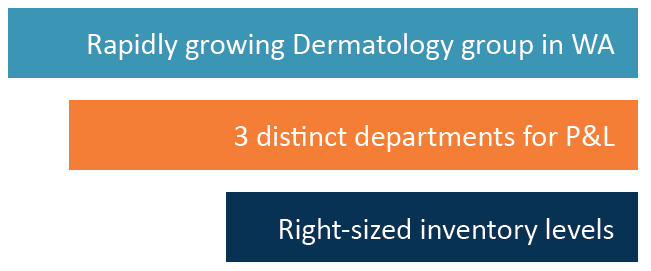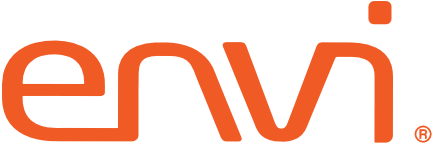
Valley Dermatology Associates is an expanding dermatology group offering state of the art care to a growing patient population in Yakima, Washington. Since opening in 2001, the group has continued to expand, adding staff to deliver complete and comprehensive dermatologic care. With expert healthcare providers and an expanding variety of services, patients are provided with the highest level of care and detection available.
Valley Derm customized an Envi set-up specifically for their organization. The team created individual department and service lines – including surgical, clinical dermatology and cosmetics – to increase visibility and generate department Profit & Loss statements.
THE VALLEY DERMATOLOGY STORY
Rapid Growth Sparked New Efficiencies
Heather Braswell, HT, CMA, Clinical and Anesthetics Manager at Valley Derm noted the challenges of the practice’s rapid growth. “While we experienced a surge in clinic growth and demand, we recognized the methods we used to track our expenses weren’t efficient, despite being in business for nearly 20 years. Our inventory costs were consistently high, we weren’t ordering or restocking appropriately, and supplies weren’t rotated, so often they would expire which resulted in needless waste. This was especially impactful on our retail and cosmetic service lines. I needed to find an inventory system that would let us consider each department and the unique way our clinic operates, then enable customization to fit each area’s demand.”
The Valley Derm staff partnered with their Envi implementation team to create a custom set-up for their organization. By creating three distinctive departments and service lines, they could identify products specific to a department versus those used across all lines of business. “We consolidated general items into the main supply chain department,” said Braswell. “Common things like gauze are now managed at the organization level. Then for supplies used uniquely within specific departments, an expert staff member was designated to manage those items.”
With the customized structure, the team identified goals to achieve short- and long-term improvements, focusing on data management and reporting tools to create powerful financial statements, increasing employee accountability by enabling departments to “own” their supply chain, right-sizing inventory levels and implementing a demand management approach, and streamlining ordering, replenishment, receiving and inventory processes.
Building Process Improvements from the Inside
With a new structure in place, each department performs a weekly restock from centrally located supply rooms. One designated department employee ensures that supply room items are tracked and restocked from two main storage areas. This employee is also responsible for receiving and creating orders and stock usage. Only the designated employee has access to the main storage areas, which means that the supply available for restocking in the centrally located supply rooms is all that can be used for that week. “We’ve found this keeps supply hoarding in check and makes sure everything is accounted for appropriately,” said Braswell.
Envi Drives Best Practices
The organization has seen significant results with Envi and new best practice-based processes. Braswell noted, “I’m able to pull inventory and PO information from Envi and identify what specialty items were ordered. Then when we review financials, we can allocate supplies to service lines and understand expenses. I can track what’s spent per quarter, see vendors by departments, and create P&L for each area.”
The organization made significant improvements in their inventory processes. “Tracking receipts, usage and the total dollar amount sitting in supply has let us set better par levels, utilize what we have on-hand and reorder less frequently,” added Braswell. “We’ve improved cycling our stock and weeding out products we stopped using or replaced. As we’ve improved, we’ve created a more ‘on demand’ method. We’ve established pars, but our supply chain team member uses demand planning to manage supplies. She knows where stock is located, what’s in surgery suites, what’s in main supply areas, what’s on the schedule and what to order.”

One of the most important focus areas has been increasing employee buy-in and accountability. “Employees now have a vested interest in and accountability for all the supplies the clinic needs to run,” said Braswell. “They’re thinking more about how they use supplies. With our department designees receiving and creating orders and managing stock usage, and limiting access to the main storage area, we’ve eliminated hoarding and can be sure everything is accounted.”
The organization has significantly improved tracking and visibility to consumption. “Our biggest problem was tracking what happened to an item from the time it was ordered to when it was used on a patient or sold. Envi’s usage reports help us track that product, plus we can keep up with cost increases which helps us negotiate with our suppliers,” Braswell concluded.
Best Practice Award Highlights
- Understand and reduce on-hand inventory
- Reset par levels, and add a more demand-driven approach
- Improve tracking and visibility to consumption
- Expand allocation of expenses by department
- Designate employees from each department manage stock
- Create usage templates for easy reordering of specialty items
- Increase employee buy-in and accountability
Valley Dermatology has succeeded by taking both a system-wide and department-specific approach. In her advice to others, Braswell noted, “Inventory isn’t something one person can do alone, so recruit a team that works together from the beginning.” Working together as a team, and leveraging Envi as a supply management solution, Valley Derm has addressed their most significant inventory challenges and increased financial visibility.
